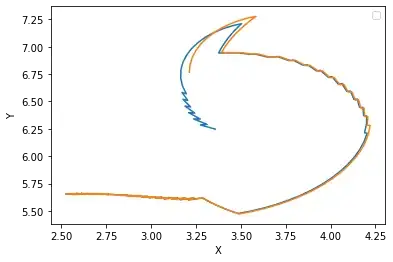This is the definition used to numerically calculate the maximal Lyapunov exponent:
$$ |\delta Z(t)| \approx e^{\lambda t} |\delta Z_0| $$
$$ \lambda \approx \frac{1}{t} \ln\left(\frac{|\delta Z(t)|}{|\delta Z_0|}\right) $$
Consider a system to be bounded in a region of space, like two balls moving inside a room, where we want to see if the dynamics are chaotic or not. We start recording the trajectory of a ball and after a good amount of time, we go back and start from a tiny dislocated initial position. We see that the trajectories diverge and we may conclude that the system is chaotic. Like the following:
But here is what I do not understand. If the room is bounded, then these two trajectories cannot get arbitrarily far from each other and their distance would not be larger than the size of the room. So in the formula for the Lyapunov exponent, $t$ would get larger and larger over time so $\lambda$ would become smaller and finally zero, no matter if it was positive at first.
Would this mean the Lyapunov exponent decays with time in bounded systems? A double pendulum is a bounded system, two trajectories (angles) can not be more than $\pi$ apart at any moment, so does its Lyapunov exponent decay to zero over time?
